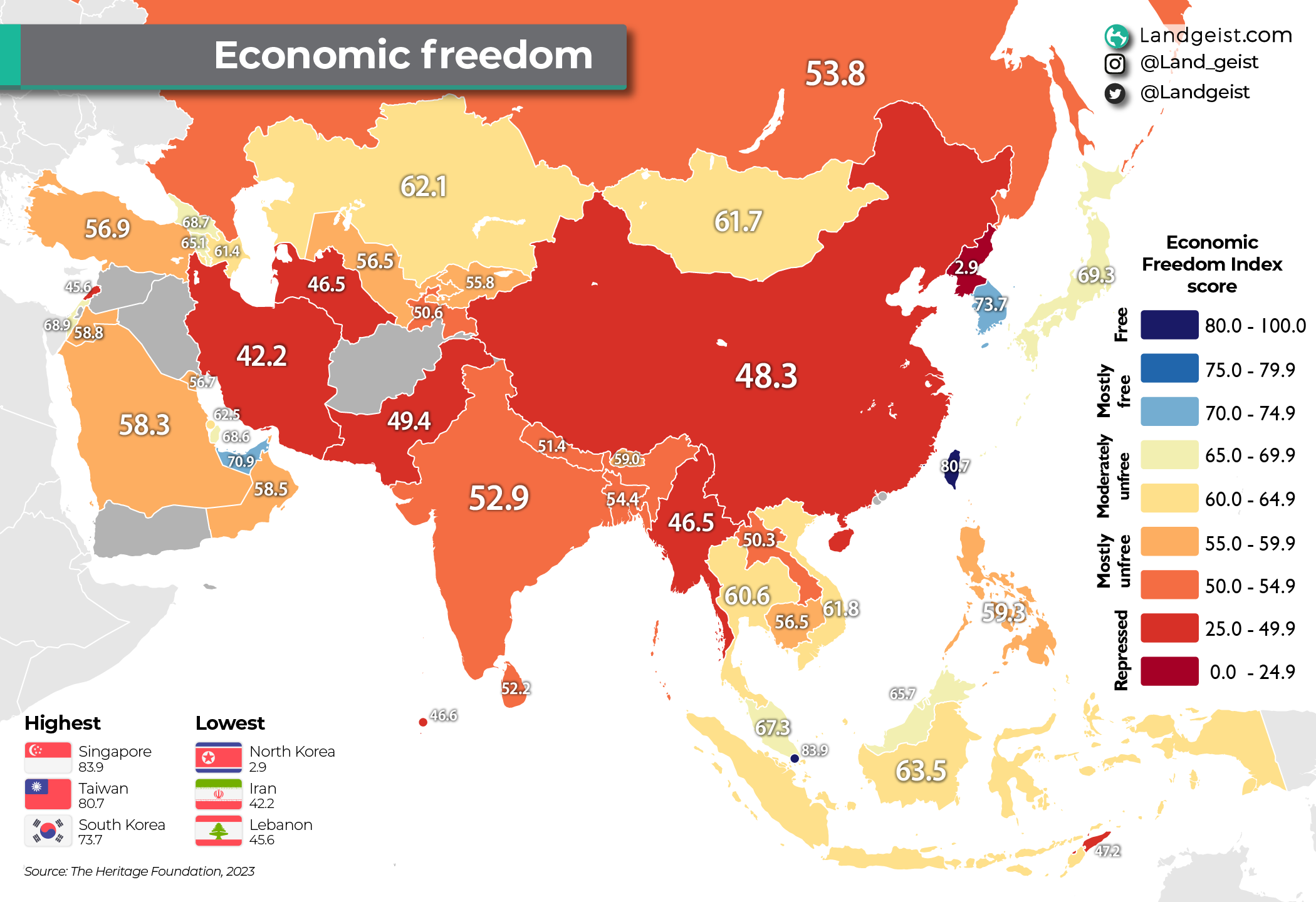What are the most and least economically free countries in Asia?

Like this map and want to support Landgeist? The best way to support Landgeist, is by sharing this map. When you share this map, make sure that you credit Landgeist and link to the source article. If you share it on Instagram, just tag @Land_geist. On Twitter tag @Landgeist.
The Index of Economic Freedom, is an index compiled by the Heritage Foundation. They describe economic freedom as the fundamental right of every human to control his or her own labour and property. In an economically free society, individuals are free to work, produce, consume, and invest in any way they please. In economically free societies, governments allow labour, capital, and goods to move freely, and refrain from coercion or constraint of liberty beyond the extent necessary to protect and maintain liberty itself.
The most economically free countries, are also the countries with the highest GDP per capita. Asia is home to both the most and least economically free country in the world. Singapore (83.9) and Taiwan (80.7) top the ranking in Asia. Together with Switzerland (83.8) and Ireland (82.0) , these 4 countries are the only truly economically free countries in the world.
At the bottom of the ranking, is North Korea (2.9), which may not come as a surprise. To give some perspective on how bad North Korea’s score is, we need to look at the second lowest country on the global ranking. This is Cuba, which scores 24.3. Almost 10 times as high as North Korea.
Overall, most Asian countries don’t score very well when it comes to economic freedom. Apart from Singapore and Taiwan, South Korea (73.7), the UAE (70.9) and Japan (69.3) also score relatively well.
The Heritage Foundation measures economic freedom based on 12 quantitative and qualitative factors, grouped into four broad categories, or pillars, of economic freedom:
- Rule of Law (property rights, government integrity, judicial effectiveness)
- Government Size (government spending, tax burden, fiscal health)
- Regulatory Efficiency (business freedom, labour freedom, monetary freedom)
- Open Markets (trade freedom, investment freedom, financial freedom)
Each of the twelve economic freedoms within these categories is graded on a scale of 0 to 100. A country’s overall score is derived by averaging these twelve economic freedoms, with equal weight being given to each.
Curious about the economic freedom in Europe? Check out this map.
